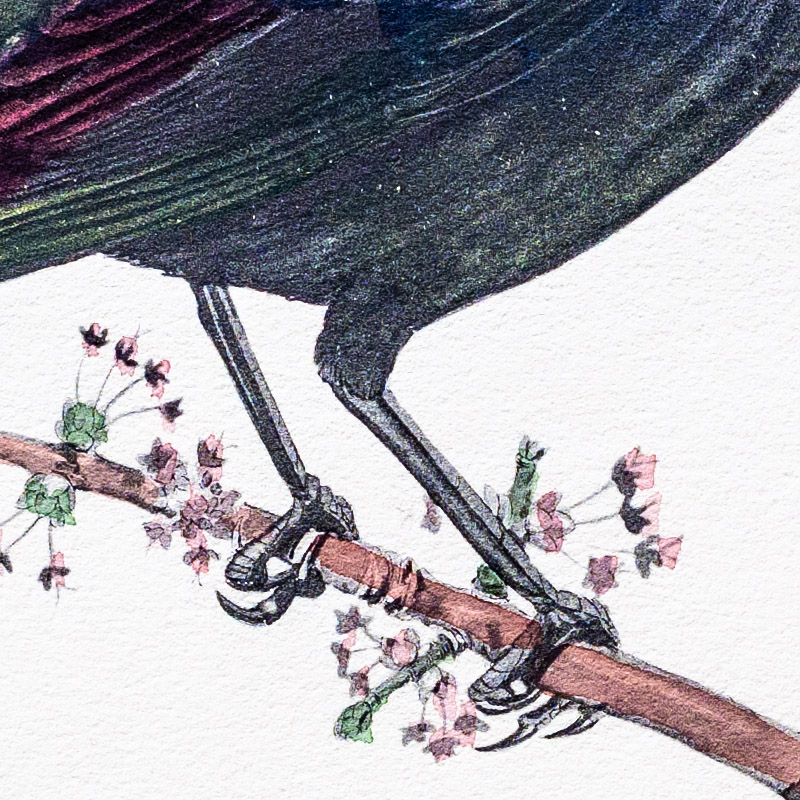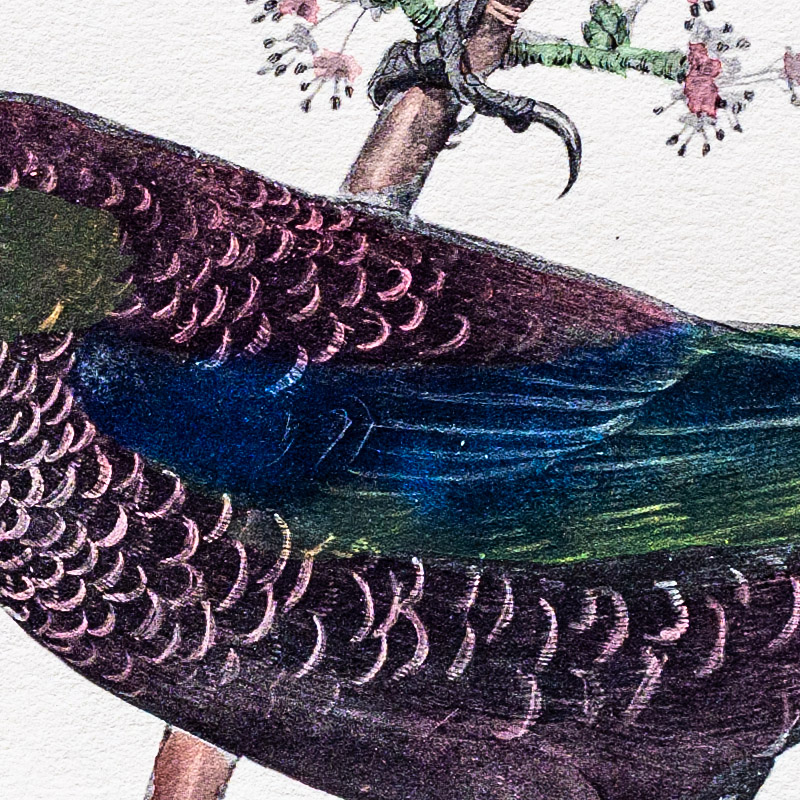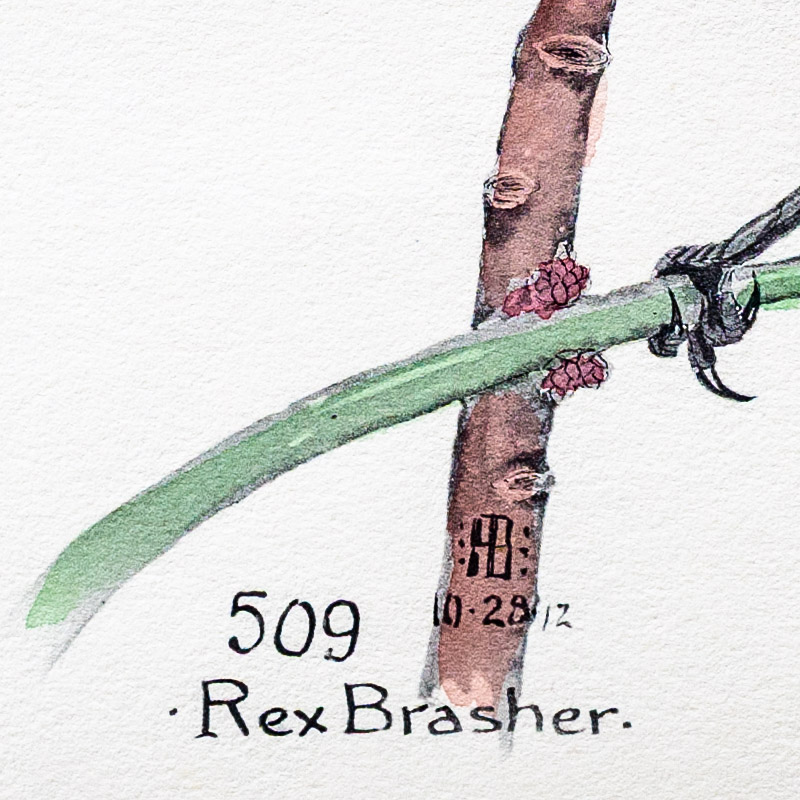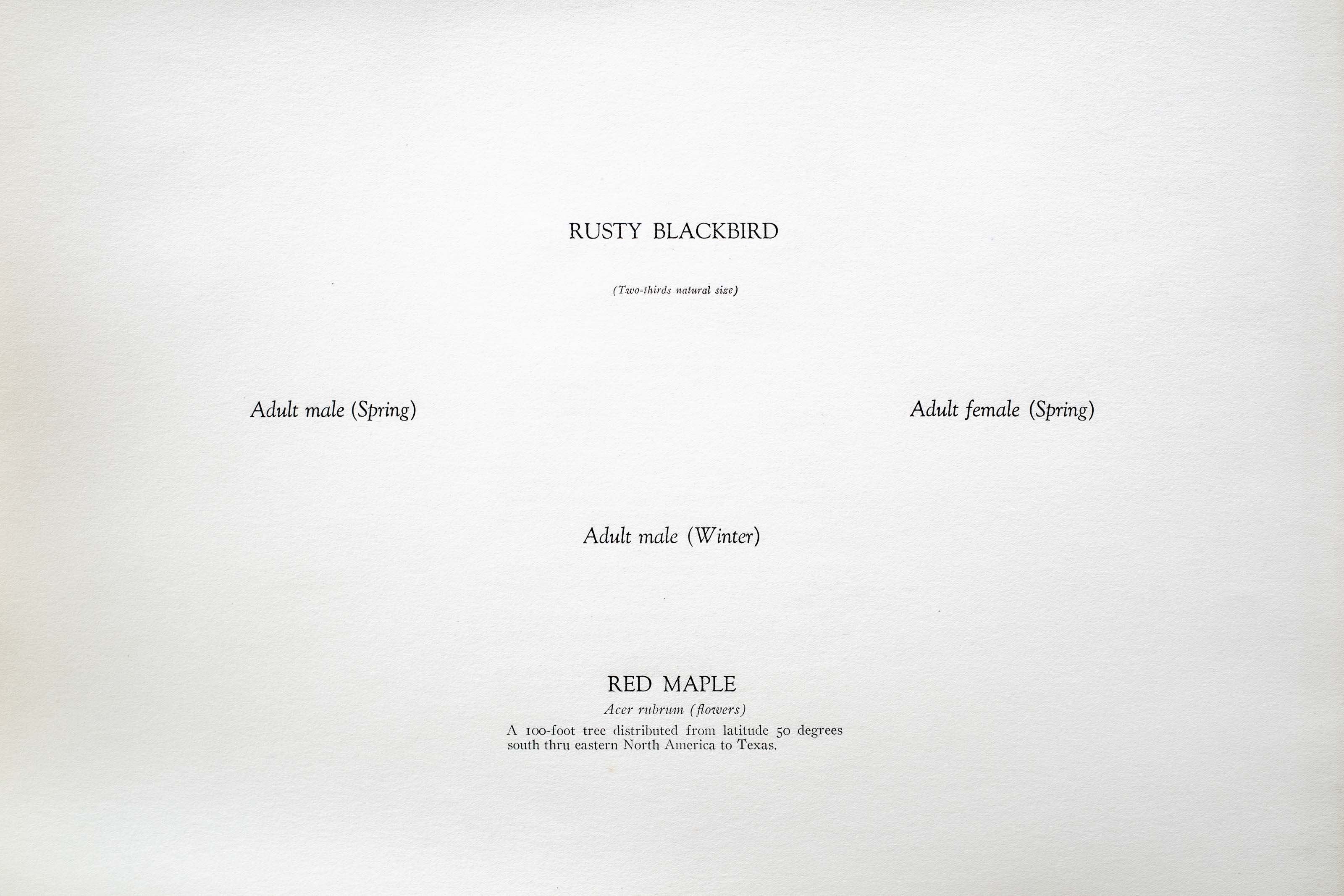






1912
1931
8
509
A team of dedicated board members, volunteers, and student interns has published every page in Volume 9. This volume includes 360 images of paintings and lyrical descriptions of birds, now available online for everyone to enjoy anywhere in the world. This is a monumental task. Each volume requires approximately 400 hours to photograph, edit, transcribe, catalog, and publish online. We need your support to complete this work.
If you're tech-savvy, have a good eye, are meticulous with details, and love structured data, please consider volunteering by emailing us at hello@rexbrasher.org.
We encourage all bird lovers and supporters to consider a monetary donation to support our mission to make Rex's work available for everyone. You can provide a one-time or recurring donation online.
In March, before Redwings flaunt their epaulets, flocks of "RUSTIES" use the old Cottonwood by the bridge for a resting station. Chucking, creaking and wheedling, the night-travelers discus the trip until the early sun has warmed them. In a compact bunch they leave the tree and true to a point, head north up the valley. Males of a nesting colony among the alders on shores of Sebago Lake, Maine, had a conference-tree and their combined conversation was scarcely musical. On isolated perches toward the outer edge I heard males voicing a distinct and quite melodious song. There were always birds wading along the water margin, feeding on marine insects.
NEST: a bulky structure of leaves, grass and mud, often lined with bright green grass; located in low bushes of swamps.
EGGS: 4 or 5; pale blue or green, heavily blotched with browns, chestnut and gray; usually without pen lines.
From Arctic coast and Alaskan shores of Bering Sea south along western edge of Great Plains to Gulf States.
A 100-foot tree distributed from latitude 50 degrees south thru eastern North America to Texas.